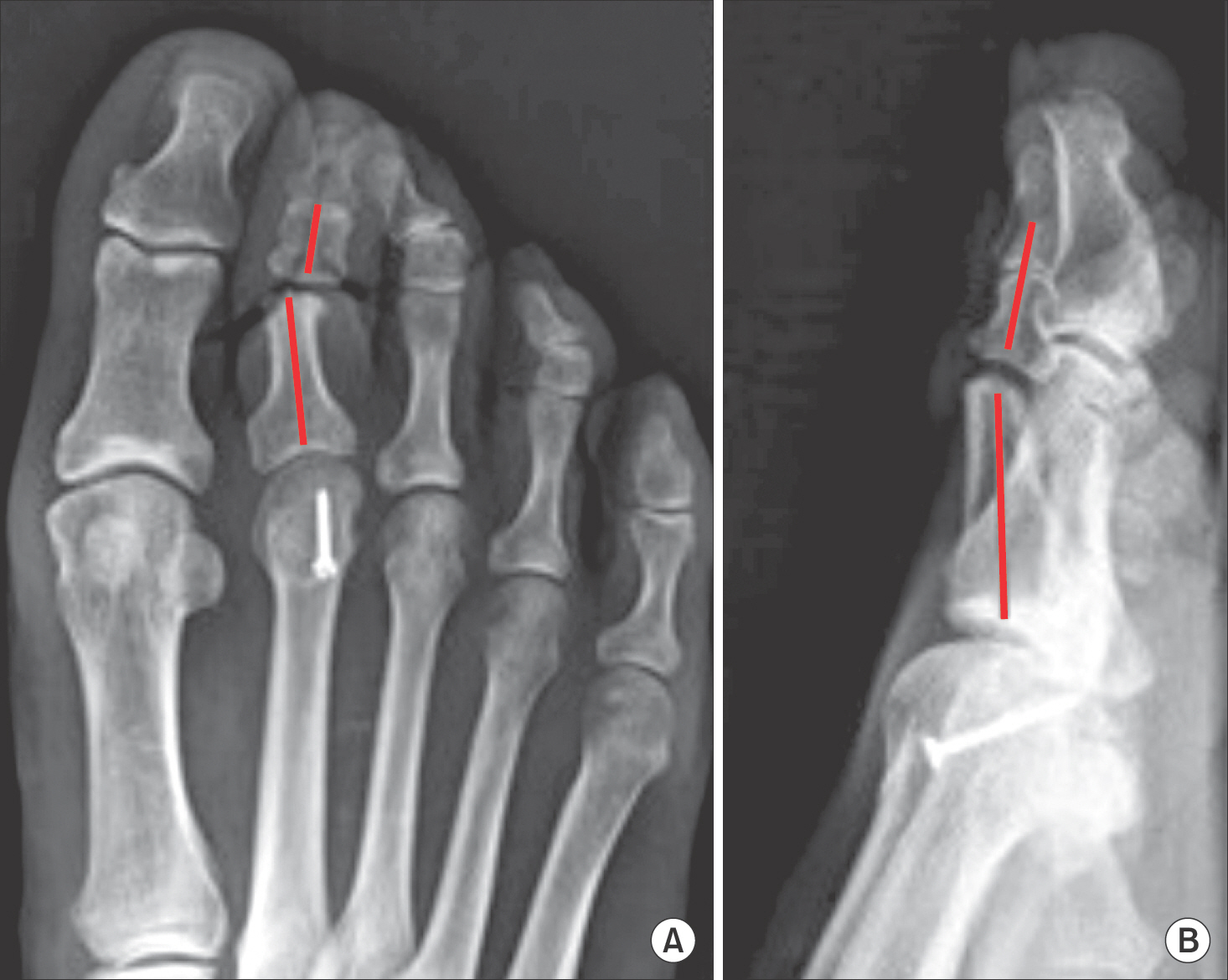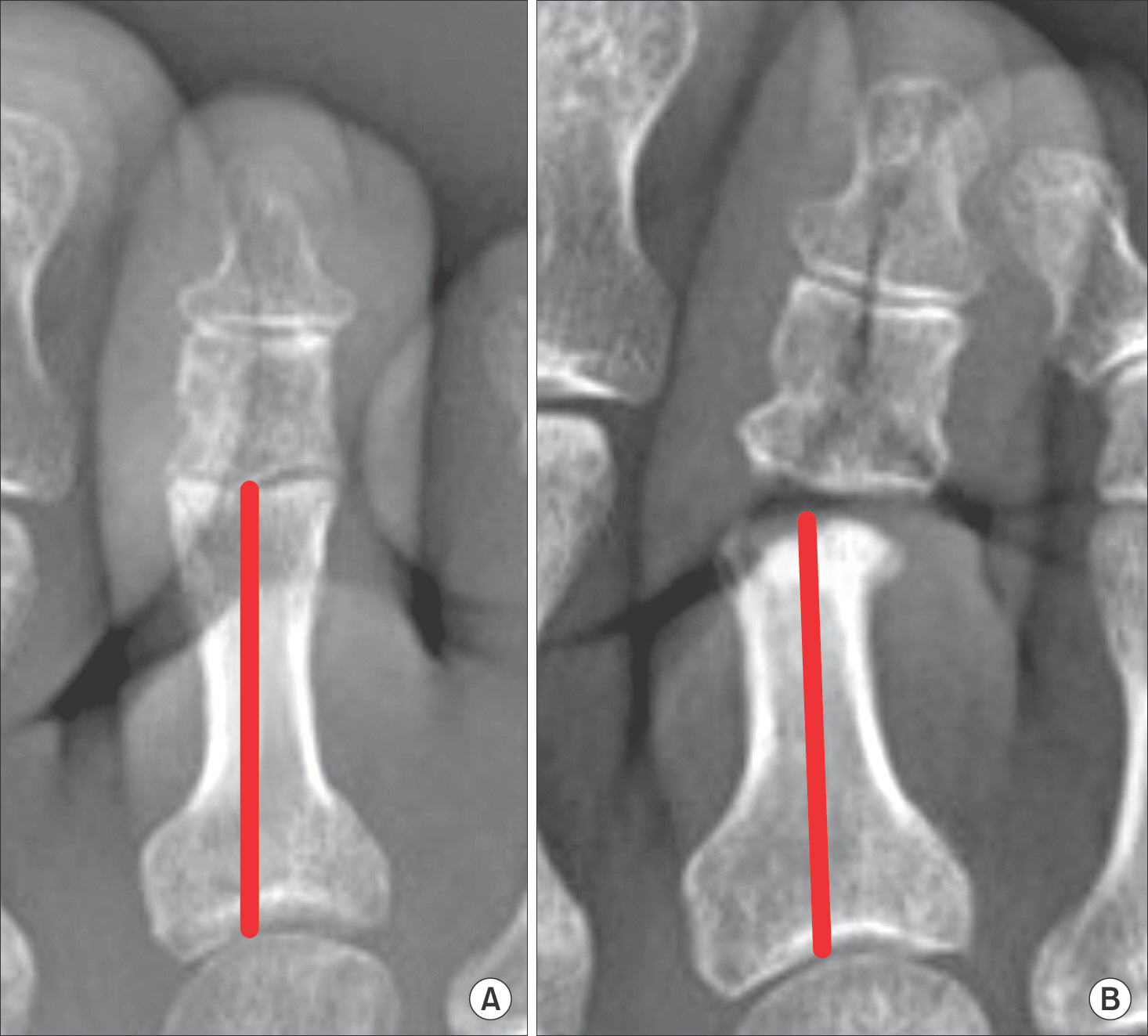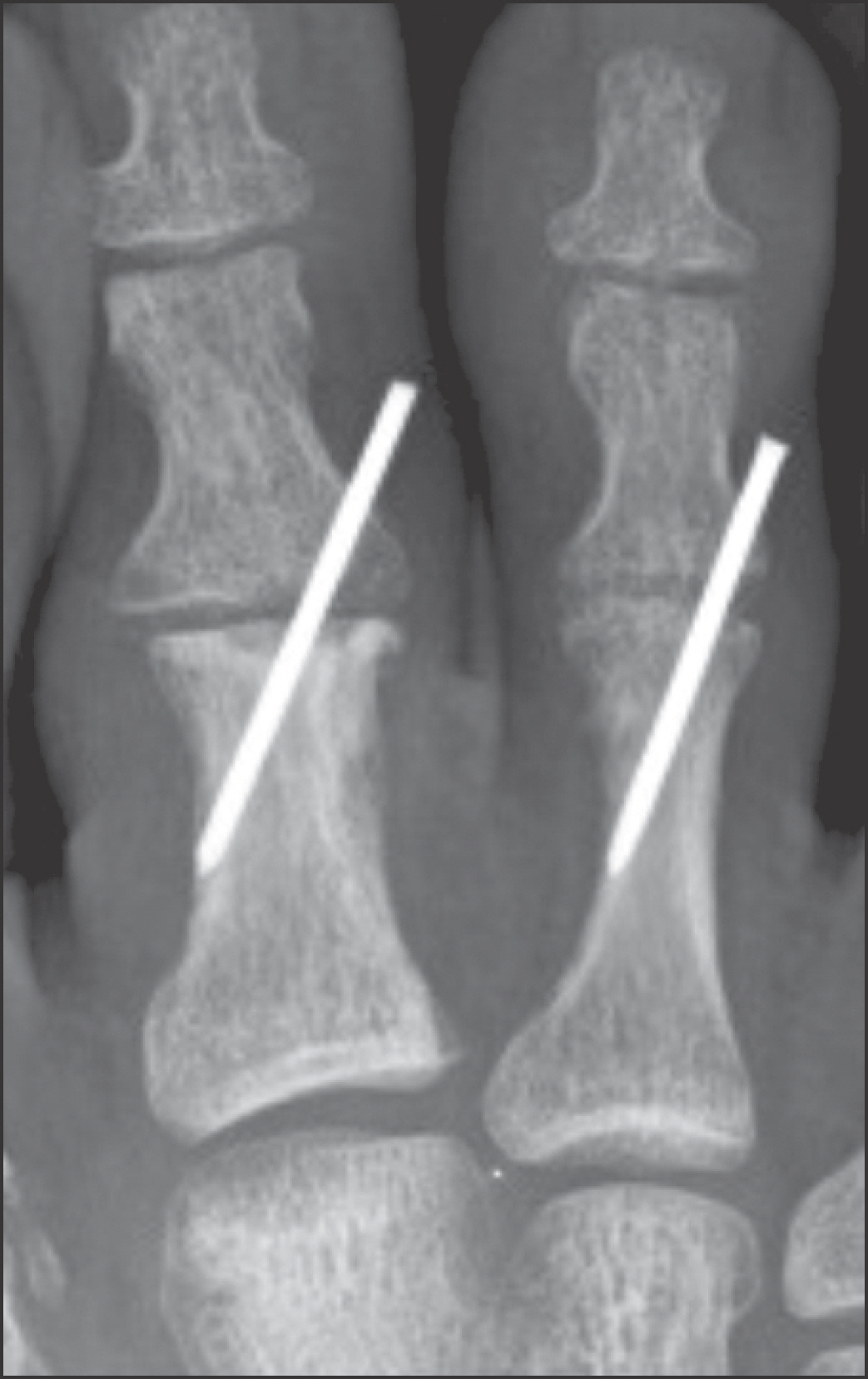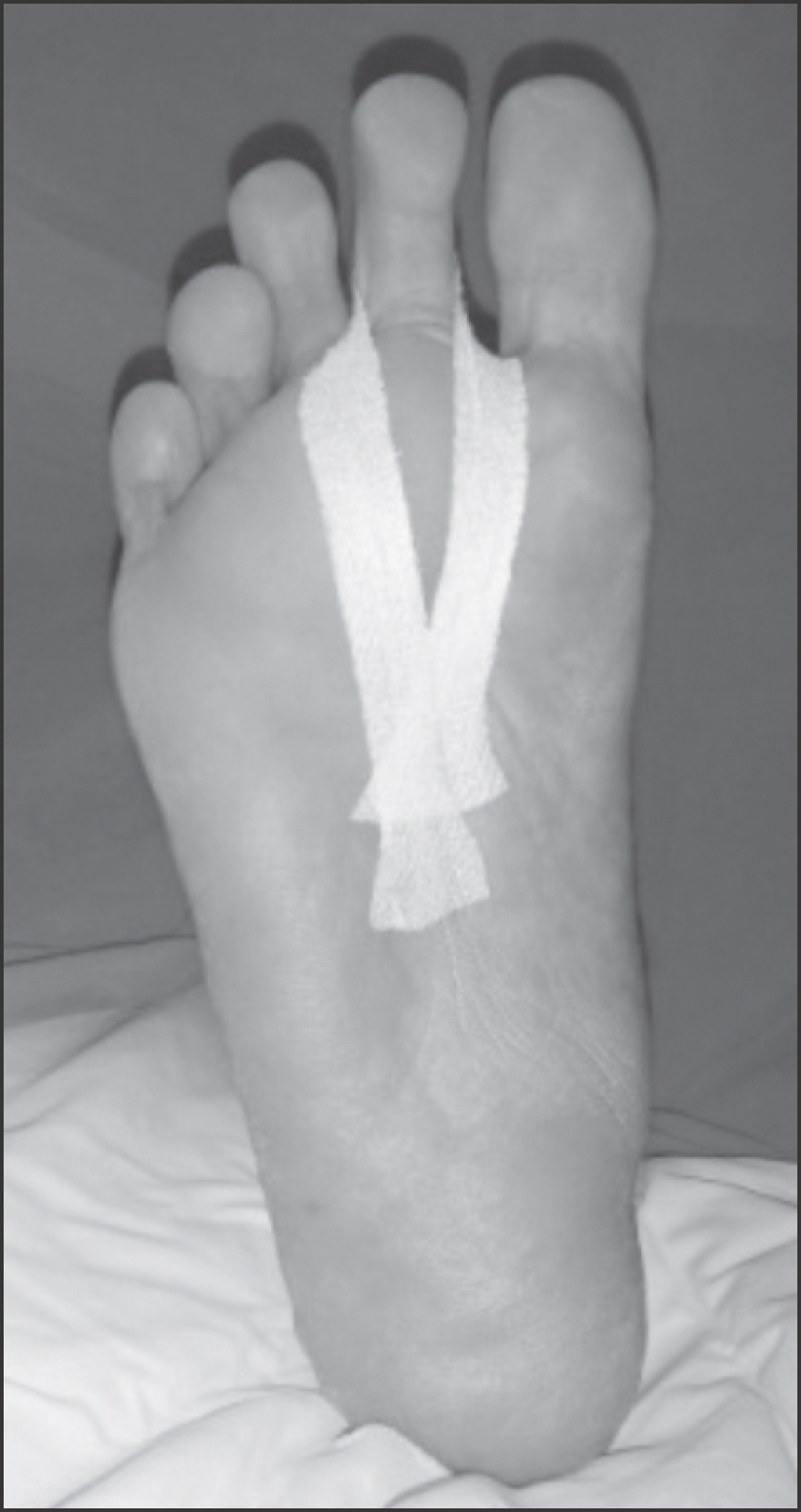J Korean Foot Ankle Soc.
2014 Dec;18(4):153-158. 10.14193/jkfas.2014.18.4.153.
Resection Arthroplasty on Lessor Toe Deformity
- Affiliations
-
- 1Department of Orthopedic Surgery, Ilsan Paik Hospital, Inje University College of Medicine, Goyang, Korea. sjs0506@paik.ac.kr
- KMID: 2181634
- DOI: http://doi.org/10.14193/jkfas.2014.18.4.153
Abstract
- PURPOSE
The objective of this study was to examine the clinical results and effectiveness of resection arthroplasty for correction of lesser toe deformity.
MATERIALS AND METHODS
From January 2000 to November 2012, 92 cases of resection arthroplasty for lesser toe deformity were reviewed. Hammer toe was the most common type of deformity, accounting for 44 toes (33 patients). Hallux valgus was the most common comorbid illness. Second toe was the most commonly affected toe and proximal interphalangeal joint was the most common location of resection arthroplasty (69 toes, 75.0%). We also analyzed the alignment of phalanges using the last follow-up weight bearing radiographic image. The analysis included clinical evaluation with American Orthopaedic Foot and Ankle Society (AOFAS) score as well as subjective satisfaction.
RESULTS
Flexor tenotomy (19 cases) was the most common combined surgery. Floating toe (4 cases) was the most common complication. The last follow-up alignment of phalanges was better than good in 71 toes (77.2%) in anteroposterior view and in 69 toes (75.0%) in lateral view. Sixty one cases (85.9%) resulted in better satisfaction than 'good' and the final average AOFAS score was 87.4.
CONCLUSION
Resection arthroplasty is a valuable surgical option for treatment of lesser toe deformity, with high patient satisfaction, easy surgical technique and remarkable correction of deformity.
Keyword
MeSH Terms
Figure
Reference
-
1.Coughlin MJ., Thompson FM. The high price of high-fashion footwear. Instr Course Lect. 1995. 44:371–7.2.Coughlin MJ., Dorris J., Polk E. Operative repair of the fixed hammertoe deformity. Foot Ankle Int. 2000. 21:94–104.
Article3.Harmonson JK., Harkless LB. Operative procedures for the correction of hammertoe, claw toe, and mallet toe: a literature review. Clin Podiatr Med Surg. 1996. 13:211–20.4.Caterini R., Farsetti P., Tarantino U., Potenza V., Ippolito E. Arthrodesis of the toe joints with an intramedullary cannulated screw for correction of hammertoe deformity. Foot Ankle Int. 2004. 25:256–61.
Article5.Coughlin MJ. Lesser toe deformities. Orthopedics. 1987. 10:63–75.
Article6.Lehman DE., Smith RW. Treatment of symptomatic hammertoe with a proximal interphalangeal joint arthrodesis. Foot Ankle Int. 1995. 16:535–41.
Article7.Shirzad K., Kiesau CD., DeOrio JK., Parekh SG. Lesser toe deformities. J Am Acad Orthop Surg. 2011. 19:505–14.
Article8.Coughlin MJ., Mann RA., Saltzman CL., Anderson RB. Surgery of the foot and ankle. Vol. 1. 8th ed.Philadelphia: Mosby/Elsevier;2007. p. 363–464.9.Ellington JK. Hammertoes and clawtoes: proximal interphalangeal joint correction. Foot Ankle Clin. 2011. 16:547–58.
Article10.Mills GP. The etiology and treatment of claw foot. J Bone Joint Surg Am. 1924. 6:142–9.11.Schnepp KH. Hammer-toe and claw foot. Am J Surg. 1937. 36:351–9.
Article12.Coughlin MJ. Subluxation and dislocation of the second metatarsophalangeal joint. Orthop Clin North Am. 1989. 20:535–51.13.Coughlin MJ. Operative repair of the mallet toe deformity. Foot Ankle Int. 1995. 16:109–16.
Article14.Hamer AJ., Stanley D., Smith TW. Surgery for curly toe deformity: a double-blind, randomised, prospective trial. J Bone Joint Surg Br. 1993. 75:662–3.
Article15.O’Kane C., Kilmartin T. Review of proximal interphalangeal joint excisional arthroplasty for the correction of second hammer toe deformity in 100 cases. Foot Ankle Int. 2005. 26:320–5.
Article
- Full Text Links
- Actions
-
Cited
- CITED
-
- Close
- Share
- Similar articles
-
- Checkrein Deformity Due to Flexor Digitorum Longus Adhesion after Comminuted Calcaneus Fracture: A Case Report
- Treatment of Lesser Toe Deformities
- An effective aesthetic toe-shortening procedure
- The Proximal Lengthening of Long Flexor Tendon in the Management of Claw Toe Deformities
- The Effect of Operative Treatment for Lessor Toes Deformity Concomitant with Hallux Valgus on Clinical Outcomes








